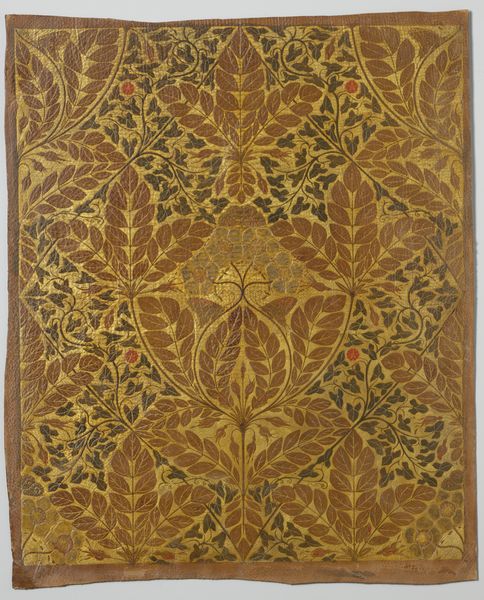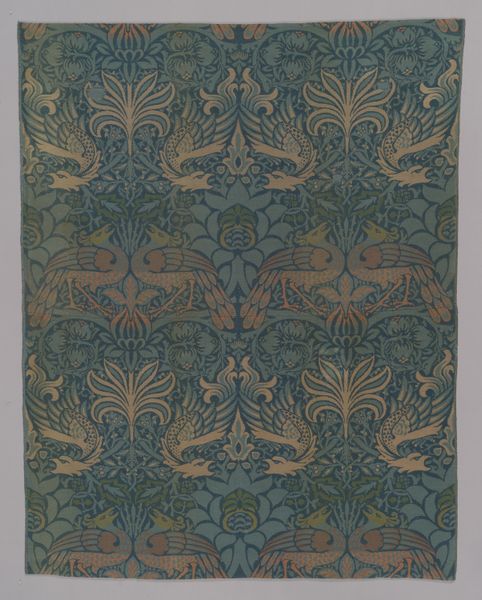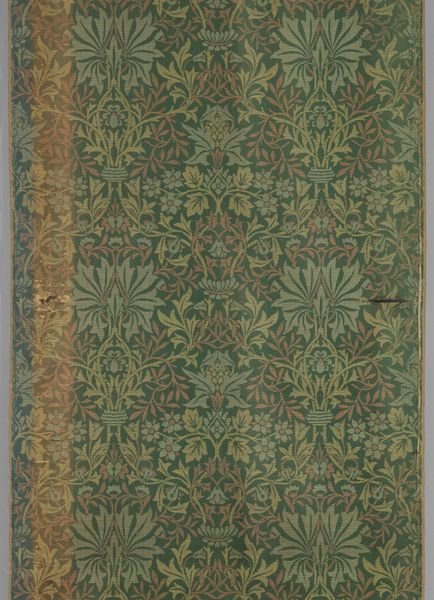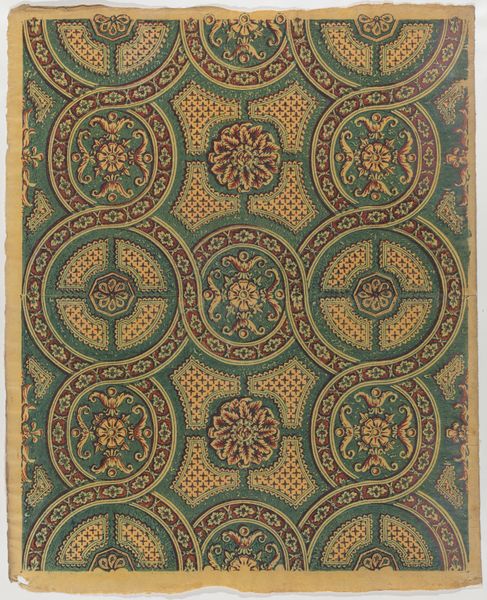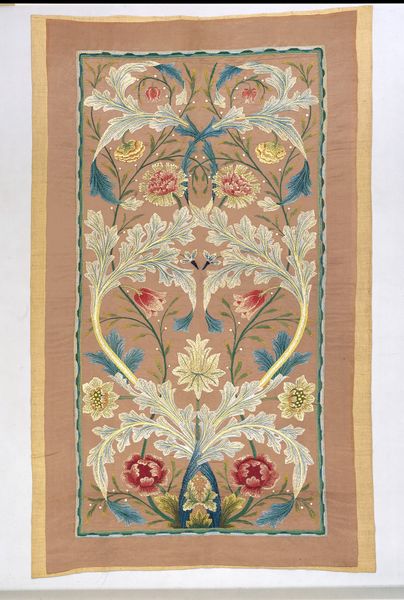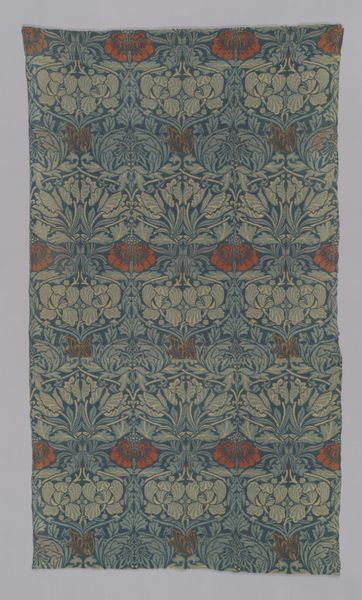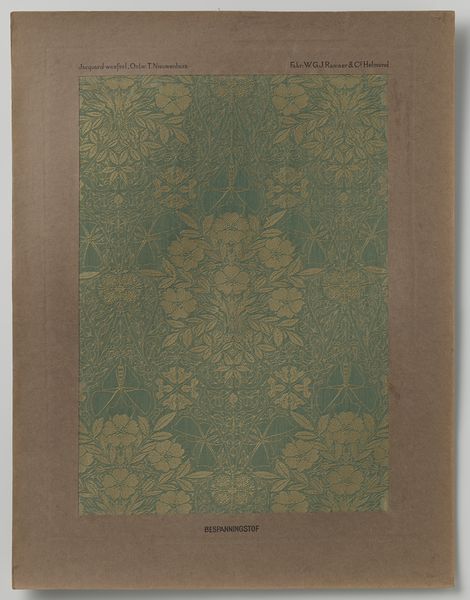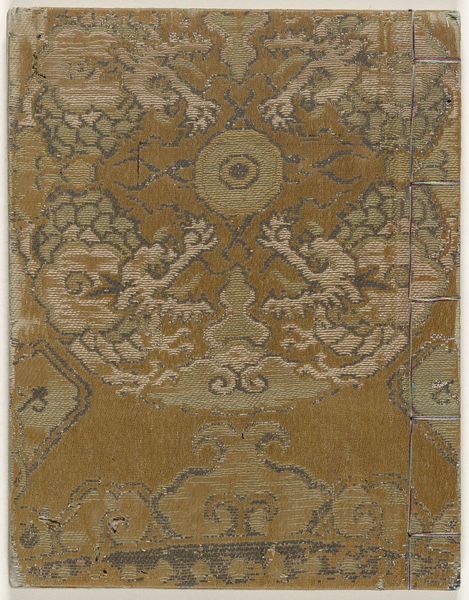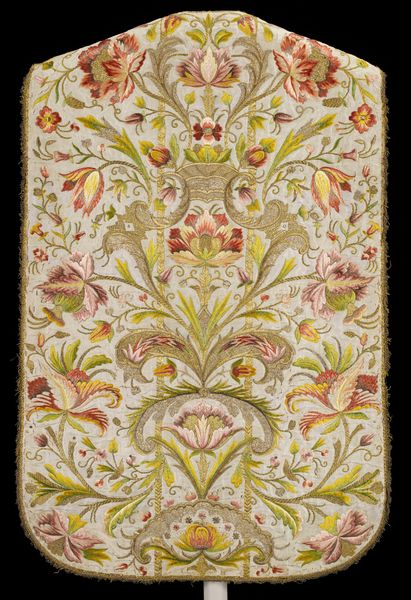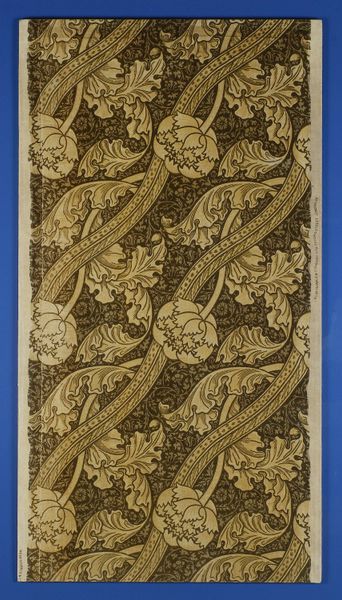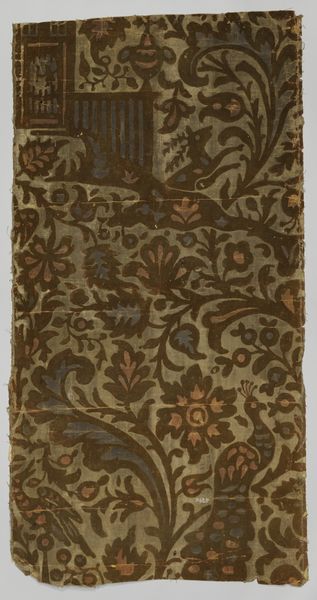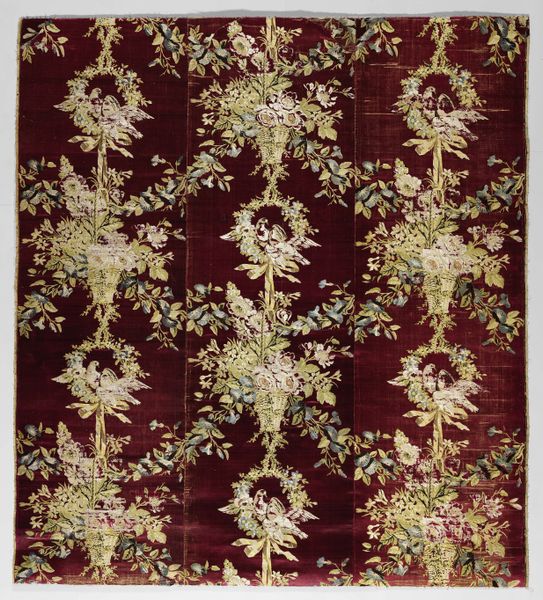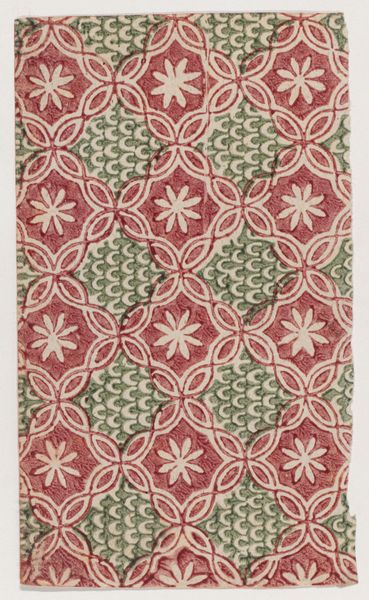
Panel (Formerly Furnishing Textiles) c. late 1880s - early 1890s
0:00
0:00
textile
#
organic
#
arts-&-crafts-movement
#
textile
#
geometric pattern
#
organic pattern
#
decorative-art
Dimensions: 187.8 × 96.9 cm (74 × 38 1/8 in.)
Copyright: Public Domain
Editor: Here we have a textile panel, dating from the late 1880s or early 1890s, attributed to Lewis Foreman Day. The museum describes it as "Formerly Furnishing Textiles," so its use is implied, even though it’s a mounted artwork today. It feels quite dense, this all-over botanical pattern in reds and greens. What’s most striking to you? Curator: The density you mention is, indeed, paramount. Consider the rhythmic repetition, how the pattern insists upon itself. There is a controlled, almost mathematical, unfolding of vegetal forms. The colour palette is restrained; how do you interpret its effect on the composition? Editor: Restrained, definitely not a wild explosion of color. More like, carefully considered and balanced. It emphasizes the formal aspects, like the symmetry. Is that a common characteristic of textiles from this period? Curator: Indeed. Symmetry often dictated design. Note how the artist has employed a limited set of motifs, varying their scale and arrangement to generate complexity. This economy of means reveals a focus on structure and internal relationships within the design, quite in line with Art Nouveau’s aesthetics. Are there other compositional features you note? Editor: I notice these little triangular shapes interspersed between the larger, flowing botanical elements... almost geometric, but still somehow fitting with the organic theme? Curator: Precisely. Those geometric punctuations offer a subtle counterpoint, a deliberate disruption of pure biomorphism. It prevents the pattern from becoming cloying. Day demonstrates an astute understanding of visual dynamics. What purpose do you think the materiality may serve? Editor: I had not thought much of this piece beyond visual appeal and pattern. Your breakdown, viewing the whole as parts, makes this far more interesting and I am eager to go read more about formal considerations within art textiles now. Curator: Yes, paying attention to such subtle details transforms this panel into a deeply fascinating investigation of design principles, far beyond its functional purpose.
Comments
No comments
Be the first to comment and join the conversation on the ultimate creative platform.
